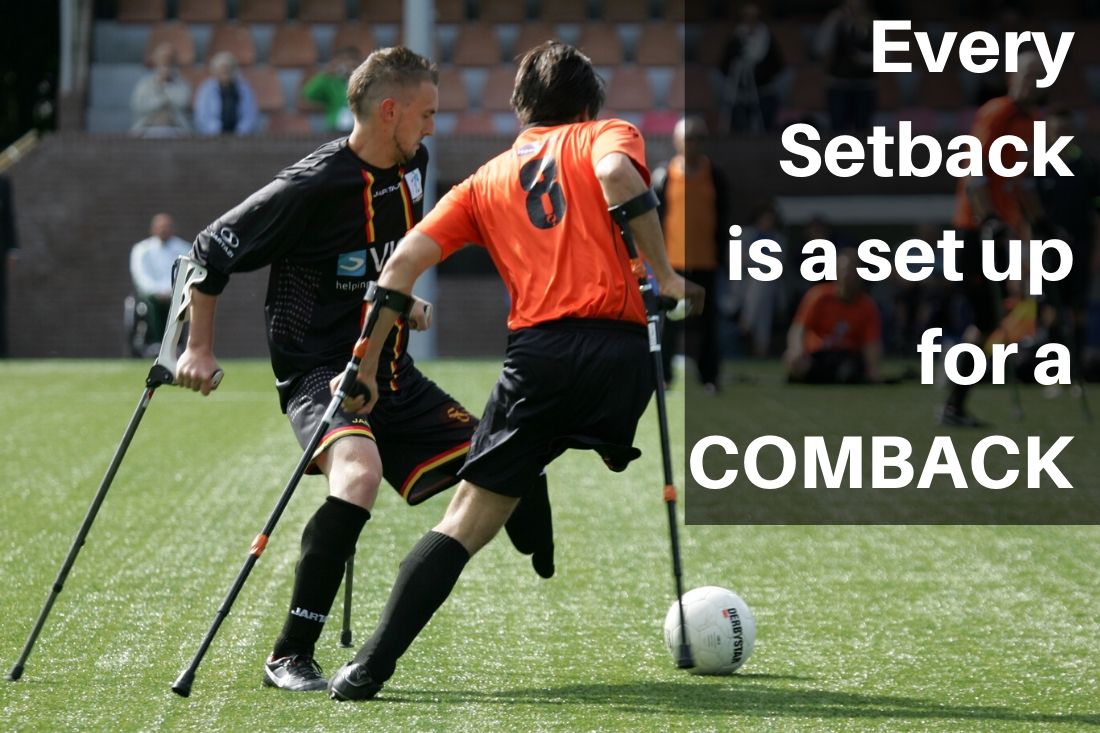Injury can be one of the most frustrating, debilitating and heart breaking things to occur in our lives. Whether it occurs during work, training, at home or anywhere in between. It has the potential to prevent us from working, training, living our lives to the fullest and can set us back from achieving our goals.
I so often speak to people and they say “I can’t train, I’m injured”. I understand if you are in two leg casts, an arm brace, a spinal board and a wheel chair, but otherwise stopping training could be the worse possible thing to do in that situation. Obviously (Or is it?), an assessment of the injury should be made by an allied health professional. Is it a long or short term injury? Does a joint need to be immobilised? Are you able to bear weight on it? Are you able to elevate your heart rate? What is the recovery time? This and a whole myriad of questions should definitely be raised before committing to an intense full body training program and an endurance adventure race, or any exercise program for that matter. Somewhere in the thick of all of those questions, there is a solution.
Having been through some serious injuries and rehabilitation myself, I had to start from the beginning and find my way forward again. Post ACL reconstruction I could no longer run, squat, lunge, jump, sprint or conduct a whole array of exercises that I loved, so i needed another solution. It was very confronting at the time and during those initial weeks post surgery I wondered what I would do. Being a very active person it wasn’t long before sitting on a couch grew old. The mental battles kicked in. This is a reality for many people with serious injuries. Coupled with heavy drugs used for inflammation and pain relief this can end up being a deadly combination. Exercise is great for our mental well being and day to day health. Take that away from someone and you risk bad moods, anxiety, depression and a host of other mental battles. From a physical perspective we start to see muscle loss (Atrophy – Especially in the injured area), a decrease in performance or the inability to perform at all and loss of sharpness in skills and drills.
The first step is to make contact with a GP or specialist, a physiotherapist, exercise physiologist, chiropractor, osteopath or remedial massage therapist. This will be based on the severity of the injury and how you choose to deal with it (speaking to a coach may give you a point in the right direction). Find out what the limitations of the injury are and how it will be addressed. Does it need surgery, scans, follow ups with a specialist, rest, heat, cold or activation and active range exercises. Implement the corrective prescription for the injury and be consistent with it. Telling the physio you did the exercises with the band doesn’t count, they know you didn’t.
At this point we can start to look at what training is suitable for you to work around that injury. Following my ACL surgery I did every bit of physio and rehabilitation I could. Admittedly at the time I was under the Army’s health scheme and that became my job for the next six months, however it taught me so much about how to take care of my body and to prevent further injury. I strongly recommend you take it as seriously. I started developing range of movement (ROM) in the knee, I learnt how to stabilise through full ROM, I slowly introduced load to the knee, sometimes I pushed to far and I suffered setbacks, but I learnt from it. I started doing Yoga. Isometric holds within the ROM I could achieve strengthened and stabilised the knee. It helped me push the range of the knee deeper and deeper. I couldn’t run so I rode a stationary bike, I hopped in the pool and swam three times a week. These are low impact exercises and great for increasing ROM, strength and stability in the injured area. I trained upper body, bench press, pull ups, push ups and anything else I could without bearing too much load in my knee. Over time I started running 20m and walking 80m for one kilometre. Then it was 50 and 50 for 2km. The breaks shortened and the distance increased. The work load and capacity increased whilst the rest periods decreased.
The bottom line is, if you do a knee or an ankle, train low impact exercises like swimming or cycling. Train upper body and learn to strengthen and stabilise the injured area. If you hurt your shoulder, train squats and lower body. Run, sit on a bike or do rehabilitation in a pool. Whatever your injury may be, educate yourself on the area that is affected and why it may have been injured. Lower back injury may be caused by tight hamstrings. Tight hip flexors, hamstrings and ITB, coupled with weak glutes could be giving you knee, hip and lower back issues. Find the cause, educate yourself and start to work out how you can be proactive in fixing the problem. Whatever you do, don’t stop training. Train mobility, start Yoga or pilates with a highly competent teacher. Your whole body will benefit from that. If you chose to do nothing your physical and mental well being will decline. You will put weight on, or maybe lose weight through muscle loss. You will lose part of your sense of purpose as you no longer have a healthy outlet for stress or some clear cut goals and outcomes. An injury is not a reason to stop training entirely. You may need to modify heavily, but under no circumstances should you every stop moving.
Author Coach Jai


